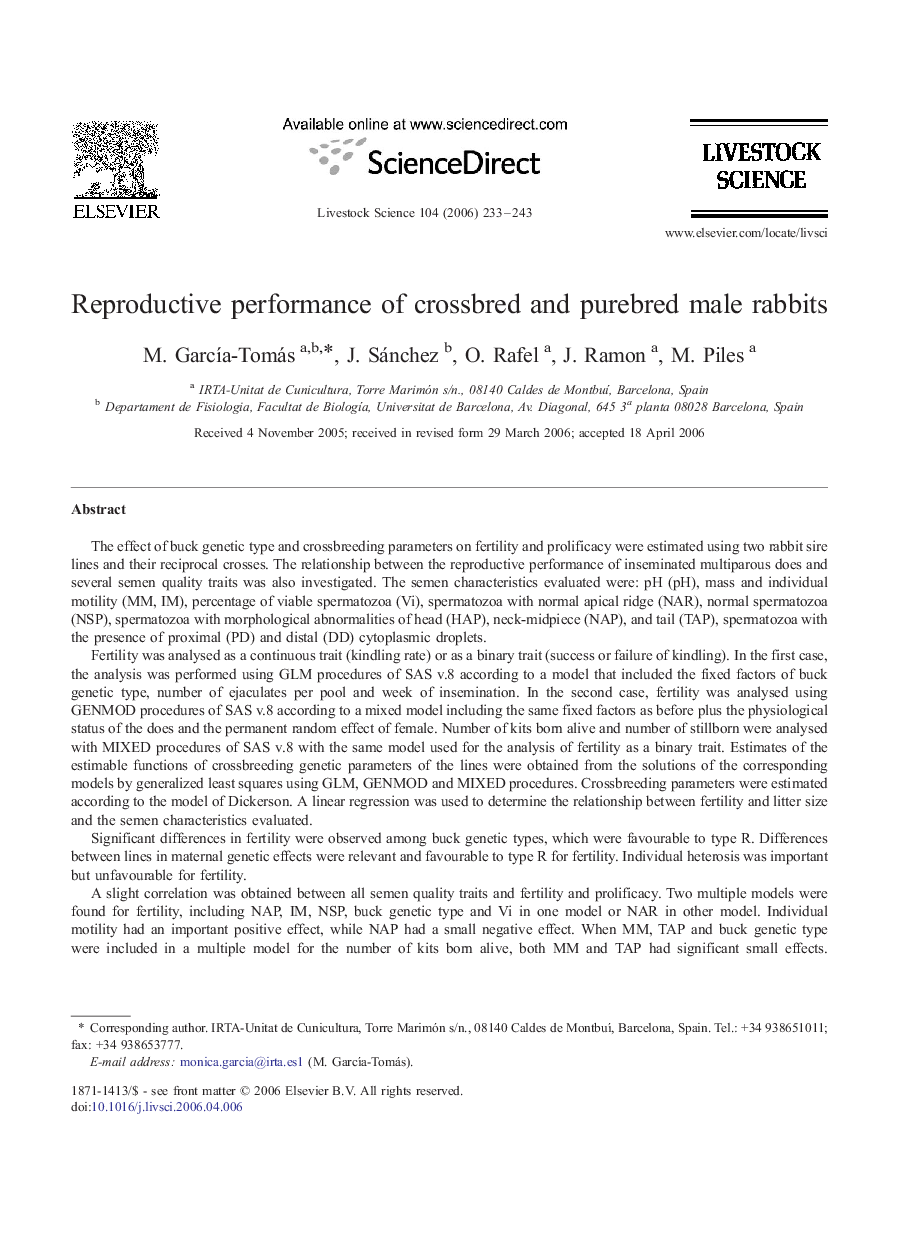| کد مقاله | کد نشریه | سال انتشار | مقاله انگلیسی | نسخه تمام متن |
|---|---|---|---|---|
| 2449175 | 1109575 | 2006 | 11 صفحه PDF | دانلود رایگان |

The effect of buck genetic type and crossbreeding parameters on fertility and prolificacy were estimated using two rabbit sire lines and their reciprocal crosses. The relationship between the reproductive performance of inseminated multiparous does and several semen quality traits was also investigated. The semen characteristics evaluated were: pH (pH), mass and individual motility (MM, IM), percentage of viable spermatozoa (Vi), spermatozoa with normal apical ridge (NAR), normal spermatozoa (NSP), spermatozoa with morphological abnormalities of head (HAP), neck-midpiece (NAP), and tail (TAP), spermatozoa with the presence of proximal (PD) and distal (DD) cytoplasmic droplets.Fertility was analysed as a continuous trait (kindling rate) or as a binary trait (success or failure of kindling). In the first case, the analysis was performed using GLM procedures of SAS v.8 according to a model that included the fixed factors of buck genetic type, number of ejaculates per pool and week of insemination. In the second case, fertility was analysed using GENMOD procedures of SAS v.8 according to a mixed model including the same fixed factors as before plus the physiological status of the does and the permanent random effect of female. Number of kits born alive and number of stillborn were analysed with MIXED procedures of SAS v.8 with the same model used for the analysis of fertility as a binary trait. Estimates of the estimable functions of crossbreeding genetic parameters of the lines were obtained from the solutions of the corresponding models by generalized least squares using GLM, GENMOD and MIXED procedures. Crossbreeding parameters were estimated according to the model of Dickerson. A linear regression was used to determine the relationship between fertility and litter size and the semen characteristics evaluated.Significant differences in fertility were observed among buck genetic types, which were favourable to type R. Differences between lines in maternal genetic effects were relevant and favourable to type R for fertility. Individual heterosis was important but unfavourable for fertility.A slight correlation was obtained between all semen quality traits and fertility and prolificacy. Two multiple models were found for fertility, including NAP, IM, NSP, buck genetic type and Vi in one model or NAR in other model. Individual motility had an important positive effect, while NAP had a small negative effect. When MM, TAP and buck genetic type were included in a multiple model for the number of kits born alive, both MM and TAP had significant small effects. Individual motility and DD appeared to be related to number of kits stillborn, but only DD had a significant although negligible effect.
Journal: Livestock Science - Volume 104, Issue 3, November 2006, Pages 233–243